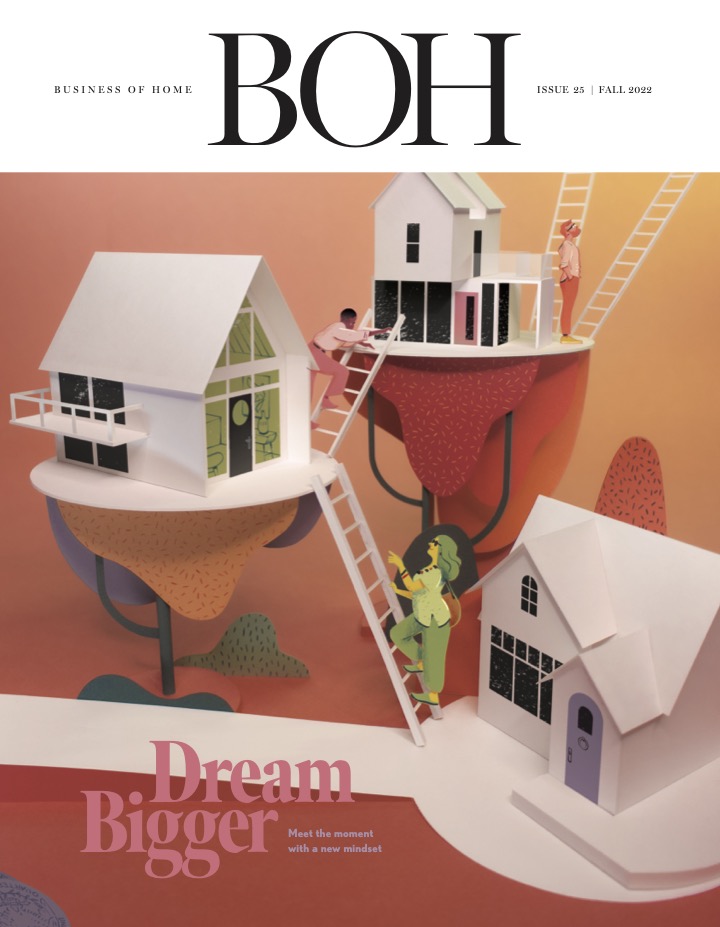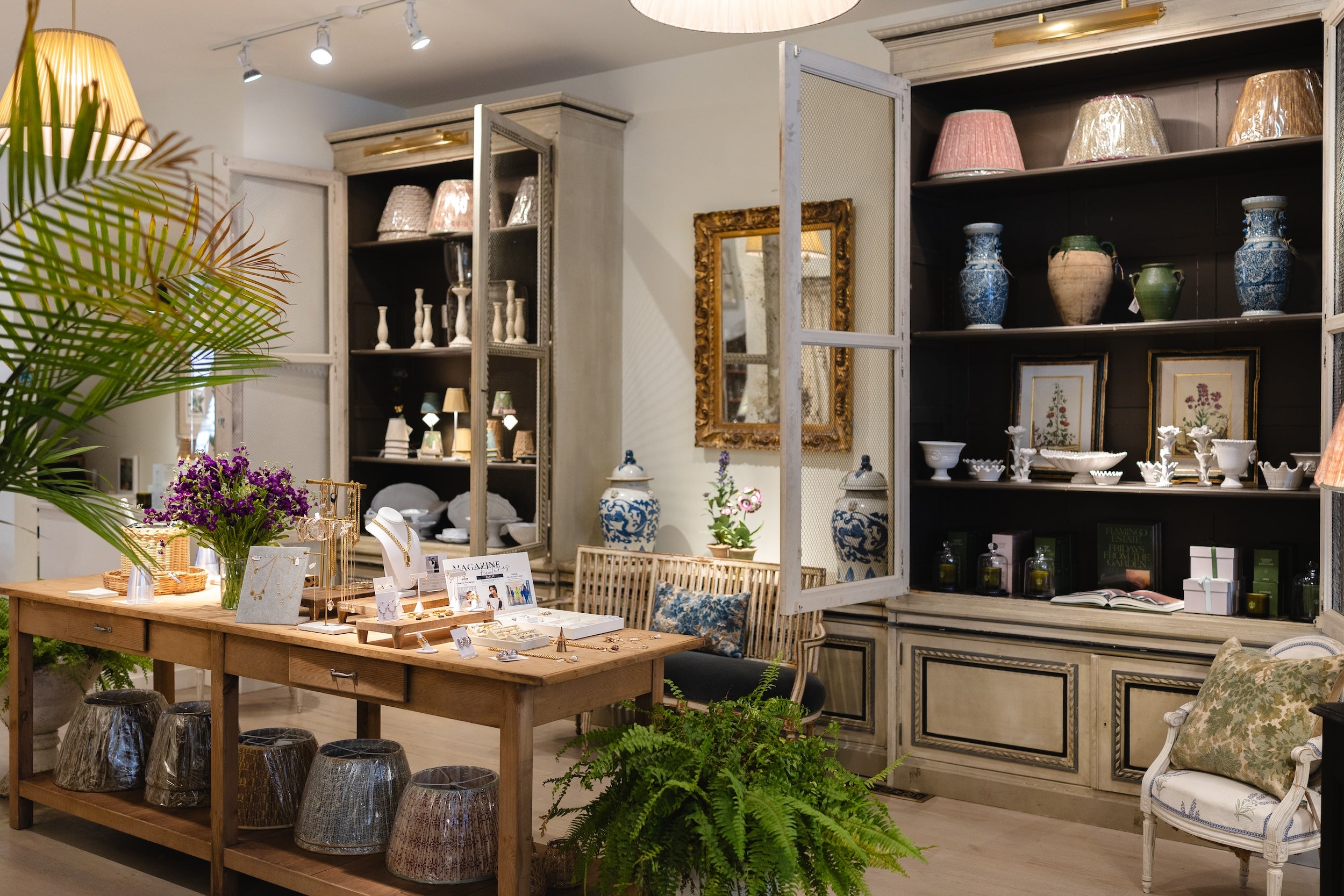In Business of Home’s series Shop Talk, we chat with owners of home furnishings stores across the country to hear about their hard-won lessons and challenges, big and small. This week, we spoke with Karen Abell, owner of the Naples, Florida–based store Patina Collection.
Abell provides a solid dose of new-year energy. She recently rebranded her 12-year-old business to emphasize how its offerings are steeped in old-world romance, and in 2024, she opened a second location in Chicago. Still, the entrepreneur has plenty of projects in the pipeline, from selling olive oil to writing a book and organizing vacations inspired by her family’s property in Tuscany. Ahead, she discusses how she finally figured out her brand, why she’s resistant to e-commerce, and why Chicago was the perfect place to expand.
What was your career like before the showroom?
I sold real estate. I just love houses, and that’s how I could capitalize on it. I used to help friends, and then I started [getting] clients. They’d say, “Why is this [house] not selling?” And I’d say, “Well, because this wall needs to get moved, and you should do this.” So that got me into design—sourcing and helping them with furniture. I do not have a design background, but I am really good spatially, and I have an eye. I was able to say to people, “Tell me how you want to live.”
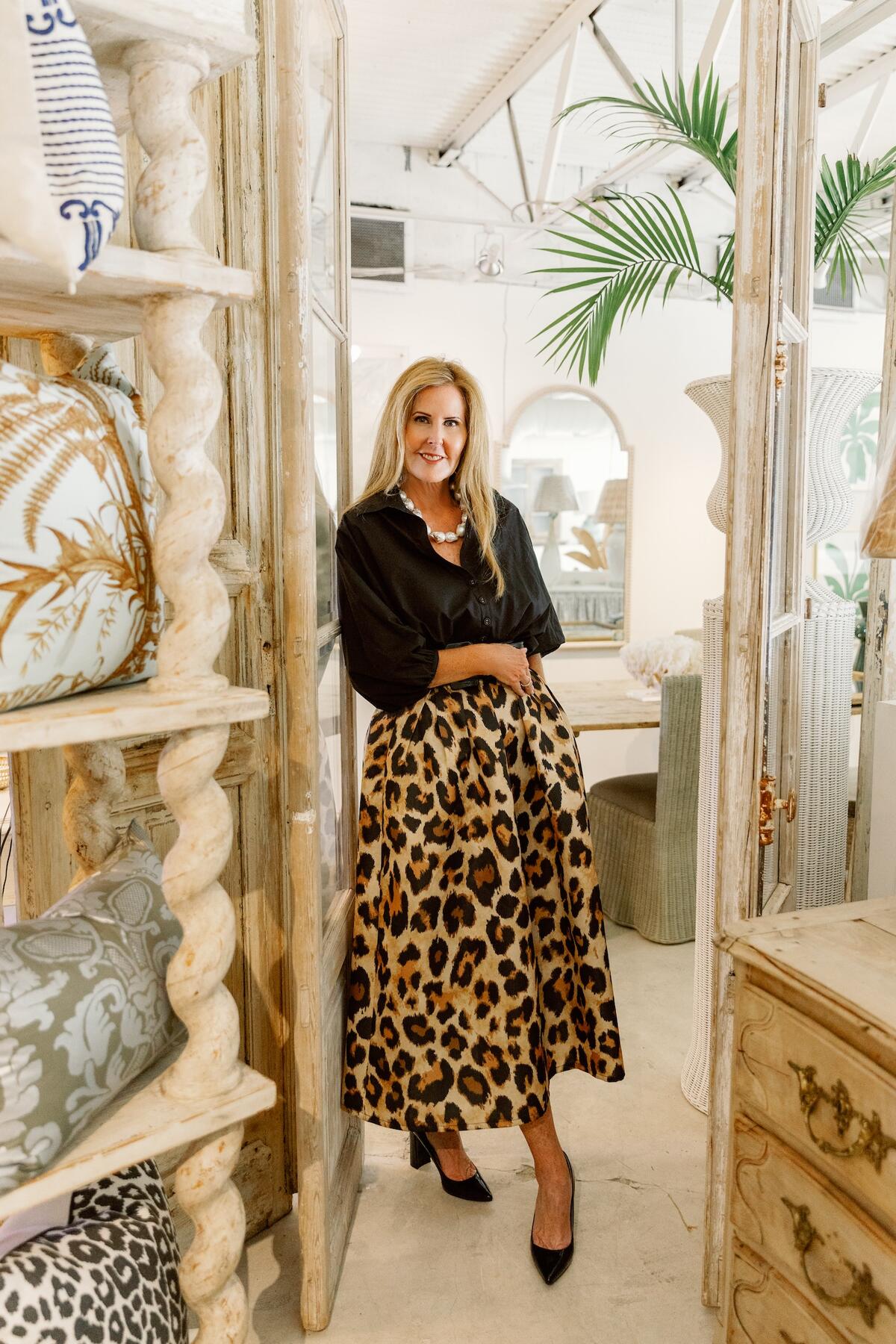
At one point, I had hired four or five designers [to work on client projects]. But design wasn’t my passion; my passion is retail and the customer experience. One morning, frustrated, I said, “If I could just have a retail store! This [design business] is so much work.” My husband looked at me and said, “Well, close it.” Two years ago, I closed down that side of the business. I had two more projects to finish, so I sat down with the designers who worked for me and transferred those customers over to them. Now I’m fully focused on retail.
What would you say your shop is known for?
Definitely antiques. I tend to sell a mix, but very Swedish-looking, painted pieces have done well. Not that many people in the U.S. [specialize in those items]. Right now, I’m shipping about 75 percent of my product elsewhere. I do have dark pieces, but it’s more for those looking for something antique that’s been refreshed and has a little bit of a lighter aesthetic—it’s not your grandmother’s antique.
On July 23, national sales training and business development expert Alison Mullins guides you through the process of visualizing your dream design client—and using data you already have to attract more of them. Click here to learn more and remember, workshops are free for BOH Insiders.
Why did you want to expand to Chicago?
Our home is Naples, Florida, and we’re Florida residents, but [we both have ties to the Midwest]: My husband went to Purdue, and I grew up in Ohio. He runs a commercial real estate development business—we have a luxury condo project in the works, we [develop] office buildings, things like that—and we got a brownstone on the Gold Coast [of Chicago] about 14 years ago because we have four large office buildings in the city. We love it there. My husband is up there three times a month, and I’m there about two times a month. But that’s how [the idea to open] the Chicago store happened. [I also saw that] so many of our Florida customers were shipping things up there. I’ve got lots of customers in Michigan or Wisconsin.
What kind of research went into opening the Chicago location?
My husband and I drove around and I’d go to the stores—I’m sure you’ve heard of Jayson Home. There used to be a lot of fun antique stores too. Vintage Pine was one I loved. It was three women sharing this enormous space. But a lot of places closed when Covid hit, and I just wasn’t sure where to be in the city. There’s Armitage Avenue, [where] Serena & Lily is. The train goes there, and I thought it would be fun, but then I drove there and couldn’t find a parking space. I drove around again, and then one more time, and it was like, “OK, I’m out of here.” If I’m a customer and I can’t find parking, forget it.
But we were still poking at the idea, because it felt right. There were so many customers up here, and I felt the market needed something. Then a friend texted me a photo of the space we’re in now. It was in a building in Old Town, and when I walked through, there were these three big windows in the back, and we could put paneled glass in them. The ceilings were old, with a beautiful panel in the front where I could have a round table to greet customers. I flew in a friend from Italy [Irene Bifolchi] to paint a fresco inside the molding. I bought large display cabinets in Paris. There’s a parking lot in front, so customers can pull up and pick up their packages. Everyone loves Old Town. It just feels like the right spot.
How are you planning to split your time?
[About a year ago, I hired] my general manager, Hannah Wolk, who has a very impressive retail background. She’s great at what she does. She manages both stores for me now—and is pretty much running everything. We’ve got a great staff in Naples, and now we’re trying to take our time finding staff [in Chicago].
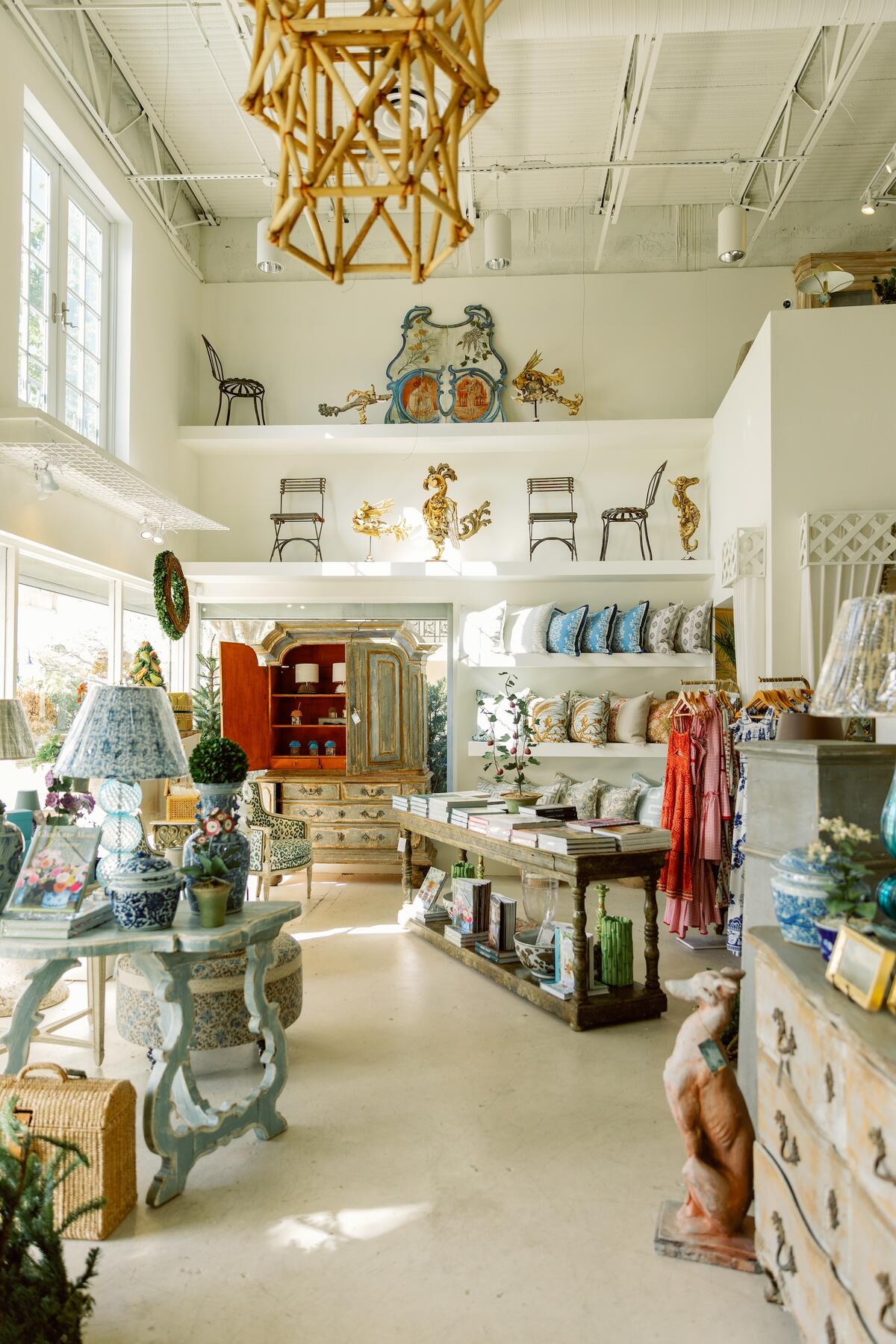
What is your sourcing process like?
I just had to do it the hard way: I went straight to Europe. We’ve always traveled there, and then we went to visit a friend in Tuscany and bought a house after three days there. Initially, I had been going to the French markets, but after we bought the house, I started sourcing more regionally from Italy. I’d drive to France as well. As I met [dealers throughout Europe], I also started to meet the people they buy from. Now, I am sourcing from all over Denmark and Sweden, as well as regions of France like Brittany and Normandy. I’m buying from the people who show at the [wholesale] fairs, which helps me immensely because then I can put those pieces on my retail floor and cut a third [of the markup from a piece changing hands] out, which helps me on the back end of sales.
I also make custom products out of Morocco and Cairo—even my accessories are imported. I’m about 90 percent imported or from Europe. It’s not for the faint of heart, especially the shipping costs.
You recently underwent a rebrand, right?
Yes. I’ve always had the name Patina Collection. Initially it was a very French [look and] theme. We did a semi-rebrand with a new logo, but I couldn’t translate it to a website or to [product] tags. Now that I’m retail only, and we’re opening the store in Chicago, I feel I’m firmly entrenched in what we do well, and [I wanted to find a look that communicated who we are and what we do]. I love [the branding of the Palm Beach store] Casa Gusto, and I have so many European vendors whose websites I love. With all of our product being from out of the country, people walk in and say, “Oh, this is a European store.” I was trying to figure out how to rebrand to exude that.
My daughter is a wedding and event planner, and she was doing a photo shoot in my dining room, where I have this beautiful Italian panel. It’s got a hole in it, but I love it—[at one point] I said, “Oh, my God, the panel looks glorious—so dark and moody.”
Hannah looked at me and said, “OK, your eyes just sparkled. This is what we’re going for [with the new look].” She was right, and it translated to everything. When you see the shopping bag, the tag, the website, our Instagram, the paint colors in my store—that screen encapsulated everything I wanted to project about Patina to a person who doesn’t know what we are. It took 12 years to finally figure it out, but now we’ve got this [brand identity].
What role does e-commerce play in your business?
We don’t have e-commerce. Because most of my things are imported, it’s tough. I’m also desperately trying to keep the one-on-one relationship [with customers]. Designers will still say, “Can you send me a couple of pictures?” We’ll do that online, but we don’t assume somebody’s going to buy a $15,000 cabinet with the click of a button. Even on my website, you can’t just click and buy an antique—you can inquire, and I’ll send more photos and say, “Look on your phone, look on your computer.” Colorations on computer screens are so different. We even had an attorney do our disclaimer.
We’ve talked about doing it on Instagram or Shopify, but right now, with the rebrand and opening in Chicago, it’s on the back burner. If I don’t have to, I almost don’t want to.
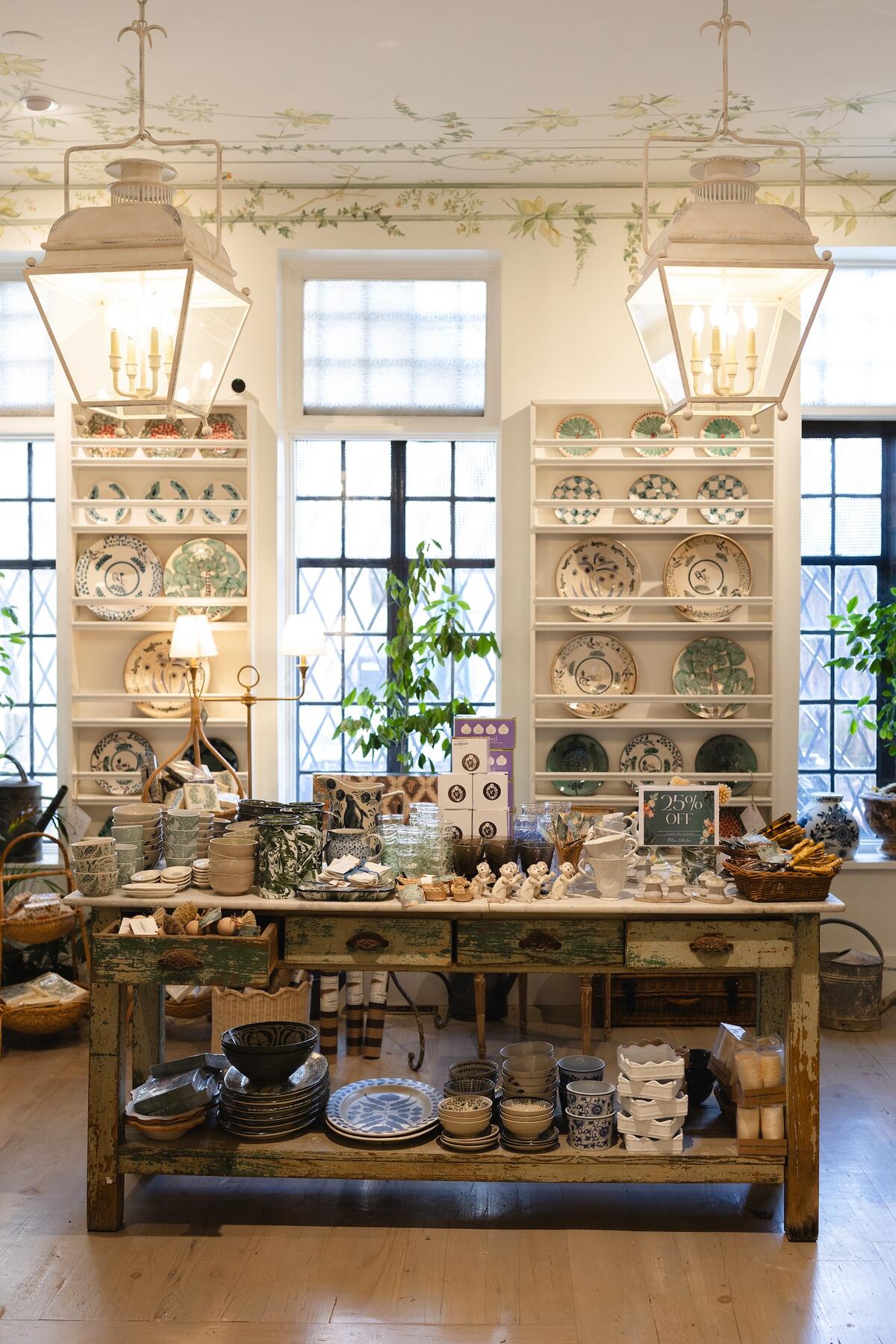
Hey, if it ain’t broke …
It would be a whole ’nother arm. We’d need a warehouse. I mean, there are just so many parts that go with it.
[On the other hand], for the majority of my things, I don’t have to worry that you can reprice me. They’re coming from Europe, and with how I buy, I get much better pricing. For example, I sell a ton of Penny Morrison lamps. My [shipping] cost is [offset by] how much I buy. If my lamp maybe costs $15 or $20 more—well, by the time you ship yours, you’re going to pay another $75.
What are some of your hopes for the future of the business?
The next thing to grow is collaborations. Designers are a huge part of my business, so [collaborating] with one or two national designers who have relationships with different vendors could bring a different kind of spice to Patina.
After that, it’s a book. There’s definitely a story to be told and something to be shared. Then we’re working on a Patina “experience” in Italy. When we first bought the house there and put pictures on Instagram, people would say, “Can I come?” I don’t want to rent my personal home, because I don’t want to cross that line with the customer, but it could be another rental house where everything’s there for you—the cars, the staff, the cooks—and a family could spend 10 days or two weeks, maybe do a little antique shopping. Huff Harrington has a location in Paris, and they host shopping [trips].
I’m also launching an olive oil [with a partner in Italy]. This year we’re only going to do a couple hundred bottles. We’re coming up with a label, and it’s being flown here in the next couple of days. We spent the summer finding the olive companies and working with our rules here with the FDA. Everything gets bottled there and shipped to the customers here, but we’ll probably have some in our stores. Olive oil is starting this season, but it’s a soft launch.
What’s your favorite day at the store?
I had one [the other day]. We are closed on Mondays here, and it was Hannah and me moving the entire floor around. I love to change spaces. Even if it’s the same furniture, I think people like to see things differently. We moved every single piece of furniture, and I think we left at about 10 o’clock last night. I don’t usually get to play in my shop that often, because it’s full of customers. That’s my favorite thing.














